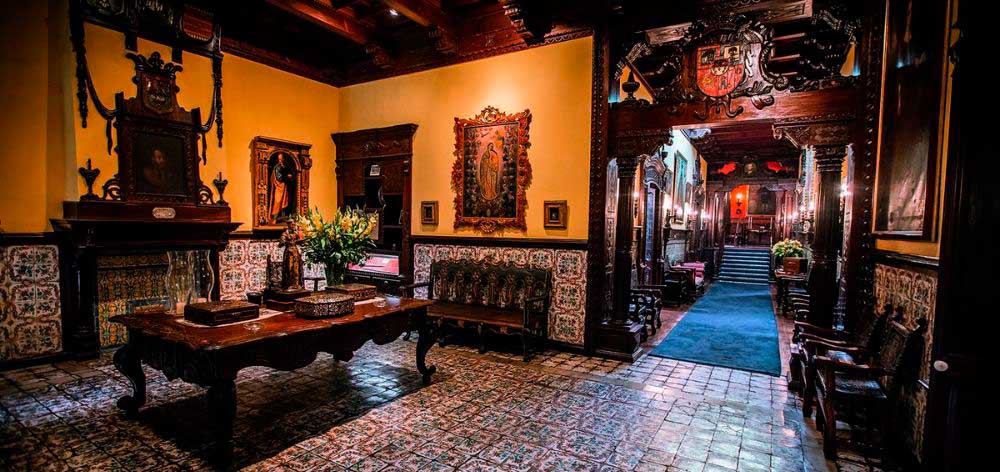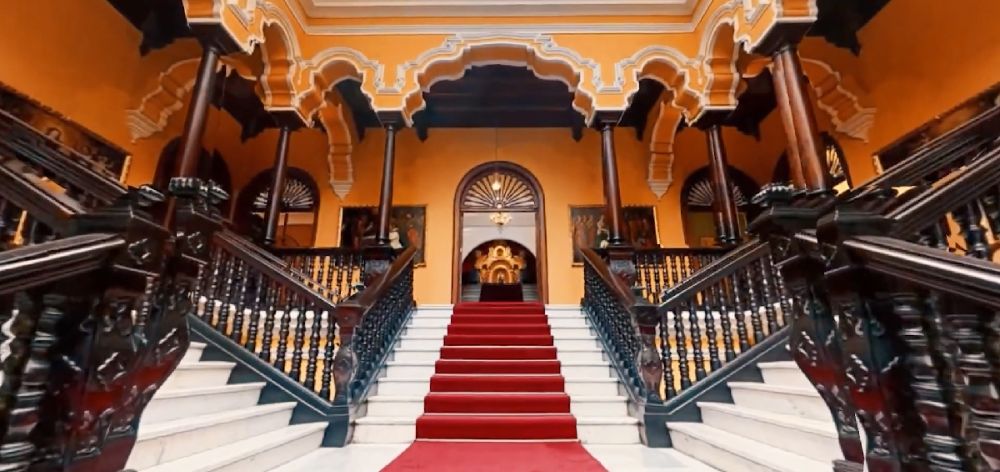A few days ago, I turned to the NYTimes to find a beautifully written piece by Michael Snyder on the prismatic, concrete-shrouded home of celebrated Peruvian artist Miguel Andrade in Lima. This came as a reminder of the growing architectural scene streaming out of the coastal metropolis, which as of today, nurtures and takes from the eclectic, motley history of the city as well as the currently favored isms around the globe.
Here at Terra Explorer, we’ll shortly dive into 6 historic buildings in Peru that inspire architects, designers, and artists alike. Make sure to add them to your architectural tour when talking to your bespoke travel advisor. Full disclosure: we’ll skirt over most of the ones already recommended by Google. So you won’t find the Palacio de Gobierno nor the Plaza San Martín here.
I promise this is the only site outside the city, just a three-hour drive away from Lima. Yet the journey is pretty much worth the hassle since it is the only surviving Inca building on the coast of Peru and a stark contrast to the more is more ethos that succeeded after the Conquista.
Although this edifice is part of a larger religious Inca complex, the Acllahuasi is the sole example of the monumental Cusco-style architecture translated into a new medium: adobe blocks (instead of masonry). The structure was masterfully restored by archaeologist Julio C. Tello in the 1940s, according to documents from when the Spaniards had just docked in the city.
It showcases the minimalist architectural language favored by the Inca elites. But in lieu of perfectly cut and polished stone work, the ancient designers turned to finely plastered adobe. The clay walls, slightly inclined over light terracotta stone foundations, are populated by banks of trapezoid gateways and niches.

Just left of Palacio de Gobierno lies the oldest dwelling in the Americas, inhabited by the same noble family since its founding —when Lima was just proclaimed a city by the Spanish. Today, the residence is an ode to the maximalist sensibilities of the Peruvian aristocracy all the way from the 16th up to the 19th century.
Throughout its eventful history —presidents, saints, and rebels are characters in it— seventeen generations of heirs left behind traces of their preferred isms; and today, the house collages under the same roof a cornucopia of styles: Baroque, Moorish revival, early Art Nouveau, Neo-Baroque, and even specks of Beaux-Arts. A mix impossible to find anywhere else in the world.
Little is known about the design and construction of the lavish country villa, as it was purchased by various owners during the 19th century and then abandoned for decades. Thankfully, most of the rococo edifice has not gone through taste-driven renovations throughout its tumultuous life. And today, the Government is restoring the site —2024 is the date for its completion.
This is the single specimen of residential rococo in Peru. And as World Monuments Fund puts it: “Quinta de Presa reflects the refined history of the Spanish-Creole aristocracy of Lima during the Age of Enlightenment, who used such villas for leisure activities as well as for cultural and scientific pursuits.” The 15000 m2 property includes a residence, a mill, outbuildings, a courtyard, and extensive gardens.
A sui generis residence designed by French Art Nouveau enthusiast H. Ratouin among the streets of the then summer town of the upper classes: Barranco. Twisting and twirling in nature, the house is a singular paragon example of Lima’s eclecticism. And although Art Nouveau at first sight, on closer inspection, one unearths decorative elements from Victorian, Neo-Baroque, Neoclassical Architecture, Moric Revival, and even some nods to indigenous Peruvian personages.
In 2020, after decades of neglect, the property was restored by Puna Studio —with Mariana Otero and Yerko Salazar at the helm. And today, a bohemian hostel occupies the site, perhaps honoring its first intended leisurely purpose.

This is the first and most influential iteration of the Neo-colonial style, which reigned in Lima until the 1940s. This revival takes on stylistic principles from the 16th and 17th century Spanish baroque while resorting to the severe symmetric composition of Beaux-Arts.
From the facade, which mirrored in ornamentation the Palacio de Torre Tagle (a famed building in the city from colonial times), protrudes heavily carved wood balconies, a signature architectural feature in early 17th century Lima. The imposing edifice transubstantiates the early aesthetic to much modern materials: concrete, steel, and bricks —all gently veneered by white stone. To the untrained eyes, it can be deceivingly dated to the 1600s.
Find it at the Plaza de Armas, next to the Palacio de Gobierno. Fun fact: Ricardo de Jaxa also designed the presidential residence.
One of the prime examples of Beaux-Arts in Peru —predominantly Neo-Baroque. It was commissioned by El Comercio (the most prominent newspaper in Peru to this day) to “resemble a fortress” after the prior building had been attacked by an angry mob of supporters of newly elected President Leguía. And so it became a grandiose construction —considering the narrow streets beside it. The top of the round corner of the building, where the entrance is, is crowned by a compact dome. And banks of columns populate the exterior walls.
Today, the building still houses the headquarters of the editorial company. The interiors have been preserved for the most part. The Beaux-Arts furniture, the marble floors, the grand stairs, and a stained glass ceiling on the second floor.
And there you have it, 6 historic buildings every architecture aficionado must visit in Peru. And if you’re looking for private art tours or cultural outings in this southern nation, contact our team of experts for a tailor-made trip to Peru.
To ensure the well-being and safety of our travelers and staff throughout our operational chain, Terra Explorer will comply with the health and safety measures and protocols established by the Peruvian Association of Adventure Tourism and Ecotourism (APTAE), and implement the Covid-19 health and safety guidelines for adventure tourism developed by the Adventure Travel Trade Association (ATTA).
Our experiences are designed considering the least possible exposure, where the final destinations are usually remote places. By their very nature, our adventure activities are considered to be low risk, mainly because they are performed outdoors where ventilation is constant and making it easy to achieve social distancing.
During these times we are working together with a small staff of honorable people who have been part of the Terra Explorer family for many years. They and their families are aligned with the established health and safety measures. Employing these staff members also seeks to reactivate the local economy.
We guarantee a safe, soul-fulfilling trip to all our travelers for whom we make these adventures possible.
Terra Explorer will strictly comply with the safety, cleaning, and hygiene protocols during our internal processes, third parties, and throughout your trip. This involves:
Follow the instructions related to health and safety given by the Terra Explorer team and your guide, before and during your trip.
Stay home if:
With the intention of delivering the most flexibility at the time of confirming your trip, we will determine the amount of the initial deposit individually and according to your itinerary characteristics.
Secure your trip with a deposit and pay the rest in one or more payments, at a time that suits you best. Please make sure you adhere to our policy and pay in full at least 31 days prior to your trip date.
If you need to cancel your trip, we will apply the following flexible policies.
For more detailed information on our terms and conditions and Covid-19 policies, please contact us at [email protected]